
Crash! Bang! That’s the sound of your head hitting the desk when you see the cost of car insurance. So which car has the cheapest insurance in Ontario? If you're in the Greater Toronto Area, Canada’s most populated region, you probably can’t afford to live close to work. Commuting is non-negotiable.
The price of gas is blowing up your budget, and real estate is, well, a rant for another day. It’s never been so expensive just to get around. Luckily, you can save money on car insurance at the dealership! Here are the 10 cheapest cars to insure in Ontario.
- Why is car insurance so expensive in Ontario?
- Location, location, location
- Vehicle usage
- Car prices
- Medical claims
- Theft & fraud
- Type of vehicle
- Distracted driving
- Severe weather
- Why are some cars cheaper to insure in Ontario?
- Which cars have the cheapest insurance in Ontario?
- Mitsubishi Mirage
- Chevrolet Spark
- Toyota Corolla: IIHS Top Safety Pick
- Mazda 3: IIHS Top Safety Pick
- Hyundai Elantra: IIHS Top Safety Pick
- Honda Civic
- Chevrolet Cruze
- Volkswagen Golf: IIHS Top Safety Pick
- Toyota Camry: IIHS Top Safety Pick
- Kia Forte
- What if none of these cars are right for you?
- Car shopping tips for cheaper insurance
- Other things that impact the cost of car insurance in Ontario
- How to find the cheapest car insurance in Ontario
Why is car insurance so expensive in Ontario?
Ontario is the most densely populated province in Canada, with almost half its population living in the Greater Toronto Area (GTA) alone. More people means more cars on the road, which means more car accidents. It’s just math. That’s one of the reasons why car insurance is so expensive in Ontario.
Here’s another bummer statistic: Ontario car insurance providers pay out almost the same amount of money in claims as they make in revenue. Trash capitalism all you want, but we all need it. Businesses need to be profitable so they can, you know, stay in business to provide the stuff you need. Other things that affect the cost of car insurance in Ontario include:
Location, location, location
The more densely populated your postal code is, the more likely you’ll get into an accident. The increased risk of a claim means you’ll pay more for car insurance. Neighbourhoods with higher crime also increase the cost of car insurance because your car is more likely to be vandalized or stolen.
Vehicle usage
This ties into location because the more time you spend behind the wheel, the more likely you are to get into an accident with a shopping cart. Or a deer. Or another driver. If you need your car to commute to work or access essential amenities like the grocery store, banks, and your kid’s school, the more likely you are to make a claim. Again, it's just math.
Read More: Totaled car: a step-by-step guide to deal with your insurance in Canada
Car prices
As the average cost to fix or replace a car goes up, so does the cost of car insurance. Cars are getting hella sophisticated and all those bells and whistles are driving up the sticker price. At the same time, supply-chain issues are impacting dealerships; too much demand for too little inventory pushes the price up too. Finally, inflation is making everything more expensive across the board, including the cost to repair or replace your car if you make a claim.
Read More: Leasing a Car vs Buying a Car in Canada: Which One is Better?
Medical claims
Here’s another crazy fact: the cost of minor injury claims has skyrocketed in recent years. All across the country, car insurance providers are paying out the same amount on a minor injury claim that they would normally only pay on a claim for severe injuries. When the average cost of claim settlements goes up, so do your premiums. Ouch!
Read More: Disability Or Critical Illness Insurance: What Are The Differences And Which One Do You Need?
Theft & fraud
In Canada, a car is stolen every 6 minutes and insurance fraud is a multi-million dollar shady operation. Your pocket is picked every single time a hoodlum jacks a car and Kevin tries to cheat the system. When those losses hit their bottom line, insurance providers turn to you. And driving without insurance is illegal, so you dig deeper into your wallet because you have no choice.
Type of vehicle
The type of car you drive has a major impact on the likelihood you’ll make a claim, and if you do, how much it’ll cost your insurance provider. Less expensive cars are cheaper to repair or replace. Older cars, within reason, are less likely to have pricey sophisticated tech like cameras, sensors, and software programs! Better safety ratings reduce the frequency and severity of injuries, keeping the cost of medical claims down. Higher-end cars are more likely to be stolen, and sports car drivers are more likely to speed their way into an accident.
Read More: Should You Keep Comprehensive Car Insurance on an Old Car?
Distracted driving
Ugh, distracted drivers, am I right? You get nailed for other people’s stupidity either directly in a fender-bender, or indirectly with higher car insurance premiums for everyone. In 2019, distracted driving accounted for one in five car crashes. Yikes, keep your eyes on the road people!
Severe weather
The weatherman can ruin your day and the cost of your car insurance. Areas with more intense weather action typically have higher car insurance rates. Unless you have a garage, you can’t exactly bring your car inside and light some candles.
Ontario gets pretty severe weather, and it’s getting more intense with climate change. They’re known for brutal storms that throw hail and down trees. Tornadoes wreak havoc and flash floods have swept away entire vehicles. Summertime can feel like a CCR song – there’s a hail claim on the rise. I know, I used to live there.
Why are some cars cheaper to insure in Ontario?
Life is a risk, especially when you get behind the wheel of a car. Driving is one of the most dangerous activities in the world, and there are almost 1,000 car accidents per day in Canada. But you still hop behind the wheel and crank The Hip like it's no big deal.
Insurance is a risky business, literally. How much you pay for car insurance depends on how likely you are to make a claim. As a driver, you are one variable. The type of car you drive is the other variable. So which car has the cheapest insurance in Ontario? Well, that depends. Some cars are cheaper to insure than others because, statistically, they are far less likely to be involved in a car insurance claim.
To determine which cars are cheaper to insure than others, insurance providers use a system called CLEAR, Canadian Loss Experience Automobile Rating, provided by the Insurance Bureau of Canada. The CLEAR system gathers data from car collision claims across the country.
That information is organized and vehicles are then grouped by risk level for every make, model, and year. Vehicles in the high-risk category have the highest rates of claims, and the claims are typically more expensive. Generally, it will cost you more to insure a vehicle in a higher risk category, and cost less to insure a vehicle in a lower risk category. Under the CLEAR system, a vehicle’s level of risk is determined by:
- Expected claims frequency
- Estimated cost of a claim
- Likelihood the vehicle will be stolen
Under the CLEAR system, cars with the cheapest insurance in Ontario usually have 3 characteristics:
- Extensive safety features
- Less expensive to repair
- Extensive anti-theft features
Recap: It is more expensive to insure vehicles that are less safe and more expensive to fix or replace. It is less expensive to insure vehicles that are safer and less expensive to fix or replace.
Which cars have the cheapest insurance in Ontario?
Thanks to the CLEAR system, you can shop for your next car based on the cost of insurance! Below is a list of the top 10 cheapest cars to insure in Ontario for 2022. The list will change every year based on the most up-to-date claims data.
We have included the starting price for the base model, the safety rating as per the Insurance Institute for Highway Safety, and the average annual cost of maintenance and expected repairs in the first 5 years of ownership, as estimated by AutoTrader.ca. Which car has the cheapest insurance in Ontario? One from this list:
Mitsubishi Mirage

Starting Price: $14,098
Safety Rating: Good
Average Annual Repair Costs: $494
Chevrolet Spark

Starting Price: $10,398
Safety Rating: Good
Average Annual Repair Costs: $589
Toyota Corolla: IIHS Top Safety Pick

Starting Price: $19,450
Safety Rating: Excellent
Average Annual Repair Costs: $222
Mazda 3: IIHS Top Safety Pick

Starting Price: $21,400
Safety Rating: Excellent
Average Annual Repair Costs: $286
Hyundai Elantra: IIHS Top Safety Pick
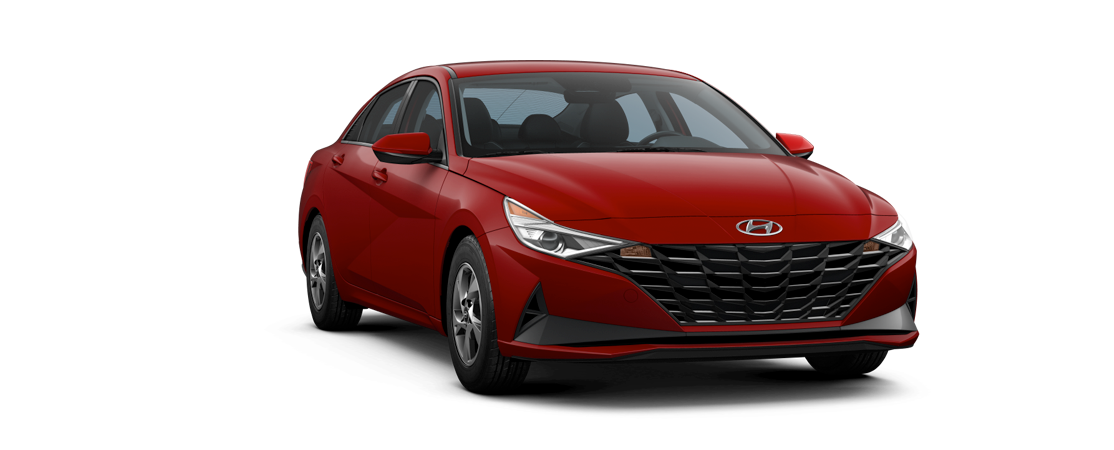
Starting Price: $20,553
Safety Rating: Excellent
Average Annual Repair Costs: $310
Honda Civic
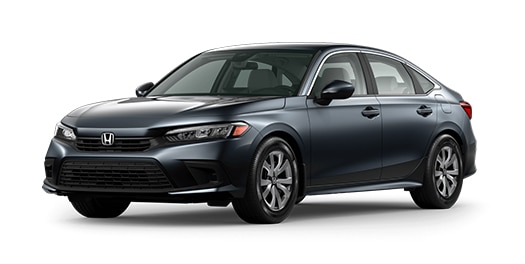
Starting Price: $26,370
Safety Rating: Good
Average Annual Repair Costs: $280
Chevrolet Cruze

Starting Price: N/A
Safety Rating: Good
Average Annual Repair Costs: N/A
As of 2019, General Motors discontinued the hugely popular Chevy Cruz to focus on expanding its line of trucks and SUVs. To find a Chevy Cruz, including the latest 2019 model, you’ll need to shop the used car market. Price will depend on age, mileage and condition. The average cost of repairs will also depend on age, mileage, condition and whether or not it’s a GM Certified Pre-Owned Vehicle, which offers a manufacturer’s warranty.
Volkswagen Golf: IIHS Top Safety Pick

Starting Price: $31,495
Safety Rating: Excellent
Average Annual Repair Costs: $309
Toyota Camry: IIHS Top Safety Pick

Starting Price: $27,750
Safety Rating: Good
Average Annual Repair Costs: $234
Kia Forte
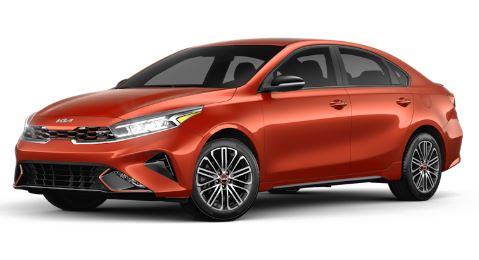
Starting Price: $18,295
Safety Rating: Good
Average Annual Repair Costs: $305
What if none of these cars are right for you?
These are the cheapest cars to insure in Ontario for 2022, but what if none of them are right for you? No problem, you can still save money on car insurance by shopping smarter, not harder. Things to keep in mind:
Type of car
The type of car you choose says a lot about who you are. That’s why “family cars” like minivans, SUVs, and crossovers are generally less expensive to insure; they’re built for and heavily marketed to families. Therefore, family cars are known to have more safety features and are less sexy for thieves. Who’s going to risk prison for Karen’s minivan full of soccer balls?
Drivers who choose these types of cars are generally older and more experienced drivers. They are also more likely to be married, have children, or both. Statistically, married people and parents are more cautious drivers who take less risk. Therefore, they make both fewer and less expensive claims. Which car has the cheapest insurance in Ontario? Probably the one your folks drive.
Read More: How to Stick to a Wedding Budget in Canada
Trim level
What the heck is a trim? If you’ve been car shopping lately, you may have noticed new cars advertised with a “starting” price. That’s because manufacturers will offer different “versions” of the same vehicle model based on what features it has. A trim level, also called a trim package, is a version of the car model that has specific features.
Manufacturers typically bundle upgrades into trim packages. If you want to add more bells and whistles to your vehicle beyond the standard model, you need to upgrade the trim level. More sophisticated tech makes your car more expensive to repair, which impacts your insurance premiums. Upgrading to a more powerful engine could also increase the cost of car insurance if providers think you are more likely to speed. Which car has the cheapest insurance in Ontario? The one with a most basic trim package.
Car shopping tips for cheaper insurance
Ontarians pay Onterrible car insurance premiums, but you can hack the system. If you’re on the market for a car and want to keep your insurance premiums down, here are some things to look for, and things to avoid:
What to look for:
- Family cars like minivans, SUVs, crossovers, and 4-door sedans
- Smaller, compact cars
- High/Excellent safety rating
- Robust safety features
- Robust Anti-theft features
- Base trim package
- Consider a used car, 2-3 years old
What to avoid:
- Sports cars
- Electric cars
- Luxury/High-End cars
- Higher trim level/package
- Limited safety features
- Limited anti-theft features
- Cars from the “most stolen” list
Other things that impact the cost of car insurance in Ontario
You are the biggest influence on the cost of car insurance, from the stuff you can control to the stuff you can’t. Insurance providers will ask you a series of questions to size you up. It’s called a risk assessment; they want to know how likely you are to make a claim and cost them money. Besides the kind of car you drive, here’s what else they want to know:
- Where you live: drivers who live in cities are more likely to get into an accident or have their car stolen than drivers in less populated areas. Again, it’s just math.
- How old you are: younger drivers are less experienced, and therefore, more likely to be involved in a collision. Besides experience, younger drivers are also more likely to engage in risky driving behaviour. As long as you maintain a clean driving record, your car insurance should get cheaper as you get older.
- Your gender: apparently, insurers think men and women behave differently behind the wheel. According to their data, men get into more accidents because they drive faster and more aggressively.
- Your driver’s license level: Ontario uses a graduated driver’s licensing system that indicates how experienced you are behind the wheel. The levels are G1, G2, and G. The G1 license is for novice drivers, G2 is for intermediate drivers, and G is for experienced drivers. As you can imagine, the cost of car insurance is higher for a G1 license than it is for a G, and vice versa.
- Driver’s abstract: that’s a fancy word for your driving history. Past car insurance claims and driving violations, like speeding tickets, are bad-news-bears. A dodgy driver’s abstract makes you riskier to insure because providers have reason to believe you’ll pull the same shenanigans again. On the upside, you’ll get rewarded with lower premiums if you have a clean record.
- How the car will be used: the more time you spend on the road, the more likely you are to collide with a claim. The insurance provided needs to know if the car is for regular use like commuting to work, taking your kids to school, or grocery shopping.
Many offer cheaper rates for occasional use, which comes with conditions and restrictions. Look for ways to carpool, walk, and take public transit so you can take advantage of cheaper car insurance. If your car is your work, like Uber or Skip the Dishes, that complicates things. You need special insurance for that.
Read More: Food Delivery Car Insurance: Are You Protected?
How to find the cheapest car insurance in Ontario
Have you tried not living in Vaughan? I’m not even joking. The GTA City of Vaughan just dethroned Brampton for the highest car insurance rates in Ontario. The remaining top 5 most expensive cities for car insurance in Ontario are:
- Ajax
- Richmond Hill
- Brampton
- Mississauga
The top 5 cheapest cities for car insurance in Ontario are:
- Kendal
- Port Hope
- Amherstview
- Brockville
- Iroquois
Read More: The 40 Cheapest Places to Live in Canada
Oh, right. You probably can’t move thanks to cringy real estate prices. Worst case Ontario, you’ll need to shop like a boss to drive down those rates. Here’s how:
Shop around
There are over 50 car insurance companies in Ontario. Unless you want to waste hours of your life you’ll never get back calling each one, use an online comparison site instead. The Hardbacon Car Insurance Comparison Tool is your new best friend. Answer a few questions and within minutes, you can compare quotes from different insurance providers. You’re welcome.
Compare quotes
No, you’re not seeing double. You can’t just compare quotes for a single car from different providers and call it day. Roll up those sleeves and dig deeper; compare quotes on a few different types of cars. Narrow your choices down to the top 3 vehicles you’re the most interested in. Then get multiple insurance quotes for each one. That way, you can narrow down the cheapest car to insure and the cheapest car insurance provider too.
Bundle your policy
One of the best ways to score cheap car insurance is to literally ask for cheap car insurance. Many car insurance companies also offer other insurance solutions for homeowners, renters, etc. Ask if you can bundle your car insurance with your house or renter’s insurance. Make sure you ask if there are any other discounts available too.
Read More: How to Buy Homeowners Insurance in Canada
Read More: Is Home Insurance for Tenants Useful?
Teen Drivers! You may qualify for a discount on car insurance if your parents add you to their policy as an occasional driver, you successfully completed a qualified driver’s ed program, or you’re on the honour roll at school. Or d) all of the above!
Increase your deductible
A deductible is a certain amount of money you have to pay out of pocket towards certain kinds of claims. It covers part of the loss and the insurance company pays for the rest. Policies with lower deductibles have higher premiums and vice versa. For cheaper car insurance, opt in for a higher deductible, then make sure you have the money set aside in your emergency fund in case you need to make a claim.
Read More: Emergency Fund Account: Why You Need One And How Much You Should Keep In It
Install an anti-theft device
Cars that are harder to steal are cheaper to insure. Many car insurance companies offer discounts if you install an approved anti-theft device. Ask if they provide an incentive program and which devices are approved, then shop around for that too.
Drive less, if you can
Cars that are used for work, school, grocery shopping, etc, cost more to insure because they spend more time on the road. If you can, avoid getting behind the wheel as much as possible. You could qualify for cheaper car insurance if your vehicle is only used occasionally, and not on a regular basis.
If you work from home, you definitely want to inquire about dropping your car insurance down to occasional or pleasure use. There are restrictions on how often you drive and where you can go, so make sure you understand the limitations so you don’t accidentally void your policy.
Read More: 50 Best Work from Home Jobs in Canada for 2022
Drive defensively, duh
Aggressive, reckless, and risky driving behaviour will put you in the fast lane to claims-ville in ticket-town. Collisions and traffic violations jack your rates way up. Keep a level head, follow the rules of the road, and take deep cleansing breaths the next an A-hole in Benz cuts you off. Road rage is not a good look for you or your car insurance premiums.
What’s a telematics product?
There is a fairly new type of car insurance product on the market called Usage Based Insurance (UBI). The fancy tech name is actually Insurance Telematics. It’s a new method some car insurance providers are using to determine risk and set prices more accurately and fairly.
Telematics technology analyzes your driving habits and uses that information to provide custom coverage based on your behaviour behind the wheel. If you’re a good driver, ask your car insurance provider if they offer any UBI options. If they do, your safe, responsible driving habits could save you a ton of money.
Swap your tires
There are only two seasons in Canada: Summer, and Crash-Bang! If you don’t have the proper tires, your car becomes a 4,000-pound Bambi on ice. Proper winter tires give you more control on slippery roads and drastically reduce your stopping distance. You’re far less likely to hit the ditch or slide through a stop sign into another car. For this reason, many car insurance providers offer discounts if you install winter tires.
I live in Manitoba where -30 degree winters are the norm, and they’re getting hella colder. Black ice should be on our provincial flag, and I have had too many near-misses for my heart health. I shelled out the extra cash for studded winter tires, and they were worth every penny. Goodbye, ditches! What’s a fishtail? You will physically feel the difference studded winter tires make on the road, and on the cost of car insurance. I strongly recommend them.






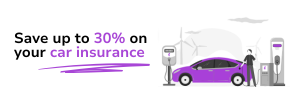



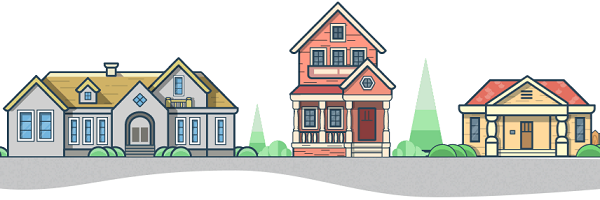






About The Author: Heidi Unrau
Heidi Unrau is the senior Finance Journalist at Hardbacon. She studied Economics at the University of Winnipeg, where she fell in love with all-things-finance. At 25, she got her first bank job as an entry-level teller. She moved up the ranks to Credit Analyst, Loans Officer, and now a Personal Finance Writer. In her spare time, you'll find her hiding in the car listening to Freakonomics podcasts, or binge-watching financial crime documentaries with a pint of Häagen-Dazs. When she's not chasing after her two little boys, she's in the hot tub or arguing with her husband over which cash back card to use for date night. She’s addicted to coffee, crypto, and obsessively checking her credit score on Borrowell.
Fun Fact: Heidi has lived in five different provinces across Canada, loves her free Tangerine bank account, and will never cut back on Starbucks. Like ever.
More posts by Heidi Unrau